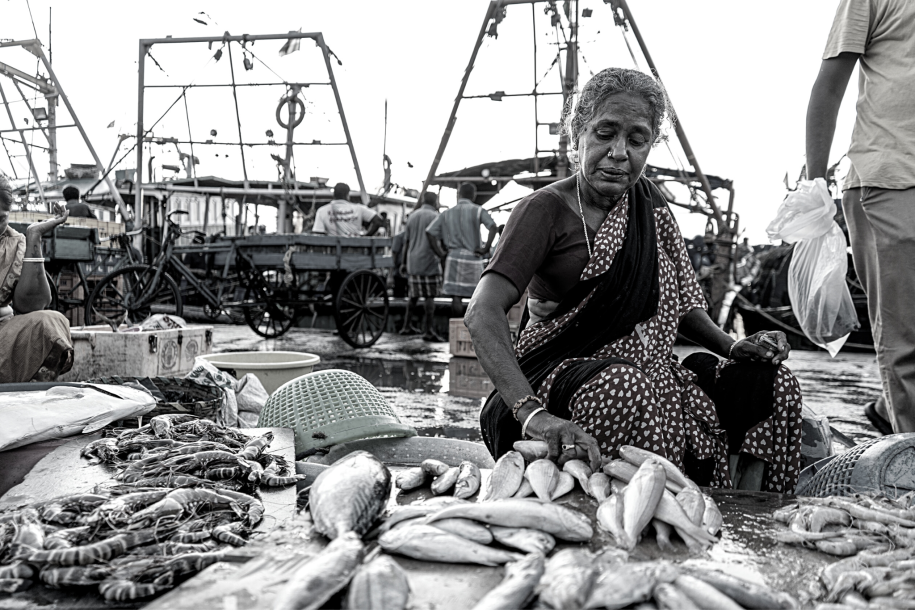This post on the history and socio-economic context of Pulicat was produced in collaboration with students from Ashoka University to observe World Environment Day.
Pulicat or Pazhaverkadu is home to over 56 fishing communities which depend on this endangered ecosystem for their livelihoods. They have been witness to the disproportionate effects of these changes across multiple dimensions. Understanding the history and how it influences livelihoods, power dynamics, gender relations, and access to resources in the region is critical to shaping effective policies and programs, interwoven with the lake’s socio-economic and cultural context.
Environmental History of Pulicat: Understanding Patterns of Climate Change | Vighnesh P
“The Pulicat Lake situated between Tamil Nadu and Andhra Pradesh is an ecologically sensitive zone. Home to a large variety of flora and fauna, Pulicat also embodies the natural and cultural heritage of its inhabitants and settlers. The intrinsic relationship cultivated between the people and the lake has come under immense pressure over the last 50 years or so, due to ecological changes. It has affected their socio-economic integrity, along with the larger implications for climate-induced problems. These facts have been highlighted in the 2010 Ramsar Convention on Wetlands which placed Pulicat Lake as one of the critically endangered water bodies in the world.
Interestingly, by looking at Pulicat’s history, there are emerging patterns of how climate change has impacted the fortunes of the people residing there. For instance, the closing up of the lake mouth by the erratic sandbar formation, increases the salinity level in the brackish water, thus leading to declining piscean resources, which are affected by the salinity levels.
Historical research has pointed out that while these changes are intrinsic to the region, increasing human and industrial activities have accelerated them. Therefore, it is essential to trace the history of Pulicat Lake to understand its place in the global ecological puzzle, and how natural-climate linkages affect human societies.”
Shifting Sands: Ecological Stress on the Pulicat Ecosystem | Kaavya Kumar and Sathiyan S
“Apart from its scenic beauty, Pulicat lake or Pazhaverkadu is also avidly known for its diverse fish produce. There is high demand for its fish and prawn produce and fishing remains the main occupation for nearly 35,000 people that inhabit the region. However, the thinning of the sand bar that separates the lagoon from the Bay of Bengal sea threatens to consume not only the ecosystem but also the livelihoods of the people who are dependent on the lake.
Such an event would also be catastrophic to the freshwater beings which thrive in the ecosystem, with the increased saline mix from the sea flowing into the lagoon. Interestingly, the fragile space has thrived despite the constant environmental threat. Adding to the changes that the Pulicat geography has been going through, overexploitation of the resources could add more to the stress.
Research shows that enabling local systems to operate can help manage the coastal commons better.
For instance, the Padu system of rotating access to a fishing ground is still practiced in Pulicat. The participation of fishermen as an integral component in the endeavour of ecological restoration of the lake has totally neglected or overlooked the institution of Padu.
As the pressure of the population dependent on the lake increases, the system may disintegrate, leading to reckless exploitation of the lake. The erosion of the Padu system thus has social, economic and ecological implications and could cause further ecological damages and drain the resources from the lake.”
When Ecology and Industry Collide | Siddarth M
“Pulicat has been caught in the eye of the storm in the last two decades, for both ecological and political reasons. In recent years, the people of the region have been mobilising to fight against the construction of a harbour in Kattupalli port, undertaken by the Adani Company. According to an Environmental Impact Assessment report, the harbour project, spread over 20 years, will double the erosion rate and increase it to 16m/year.
Activists have been urging the government to increase the area under the ecologically sensitive zone category. Depleting fish stock already poses significant challenges for the livelihoods of fishing communities
While the State government has expressed its solidarity with the people, how these concerns about livelihoods and alternative employment for workers within the port are addressed, is yet to unfold; this may be an important turning point in Pulicat’s struggle to balance its delicate coastal ecology with increasing pressures of industrial expansion and infrastructure development.”
LEAD’s latest project aims to capture and understand the various phenomena and dimensions namely livelihoods, climate, socio-economic, finance, power and gender interplay at various levels in the Pulicat region. Learn more here.
Image: Thiruchitrambalam
About the Authors
Vighnesh P, Kaavya Kumar, Sathiyan S, Siddarth M belong to the Young India Fellowship (YIF) Class of 2022 at Ashoka University. As a part of their internship, they were engaged with LEAD’s Pulicat project and hope to understand the Indian development policy and practice landscape through the process.


